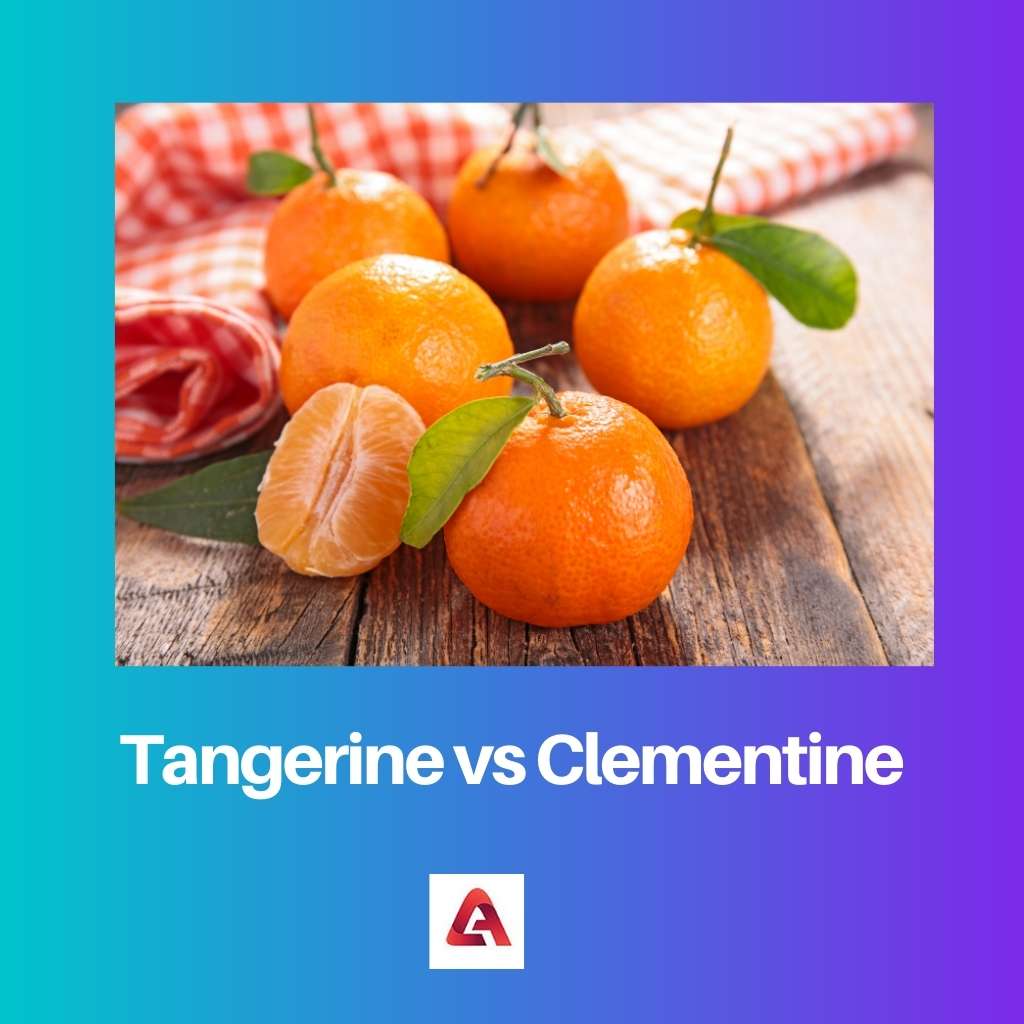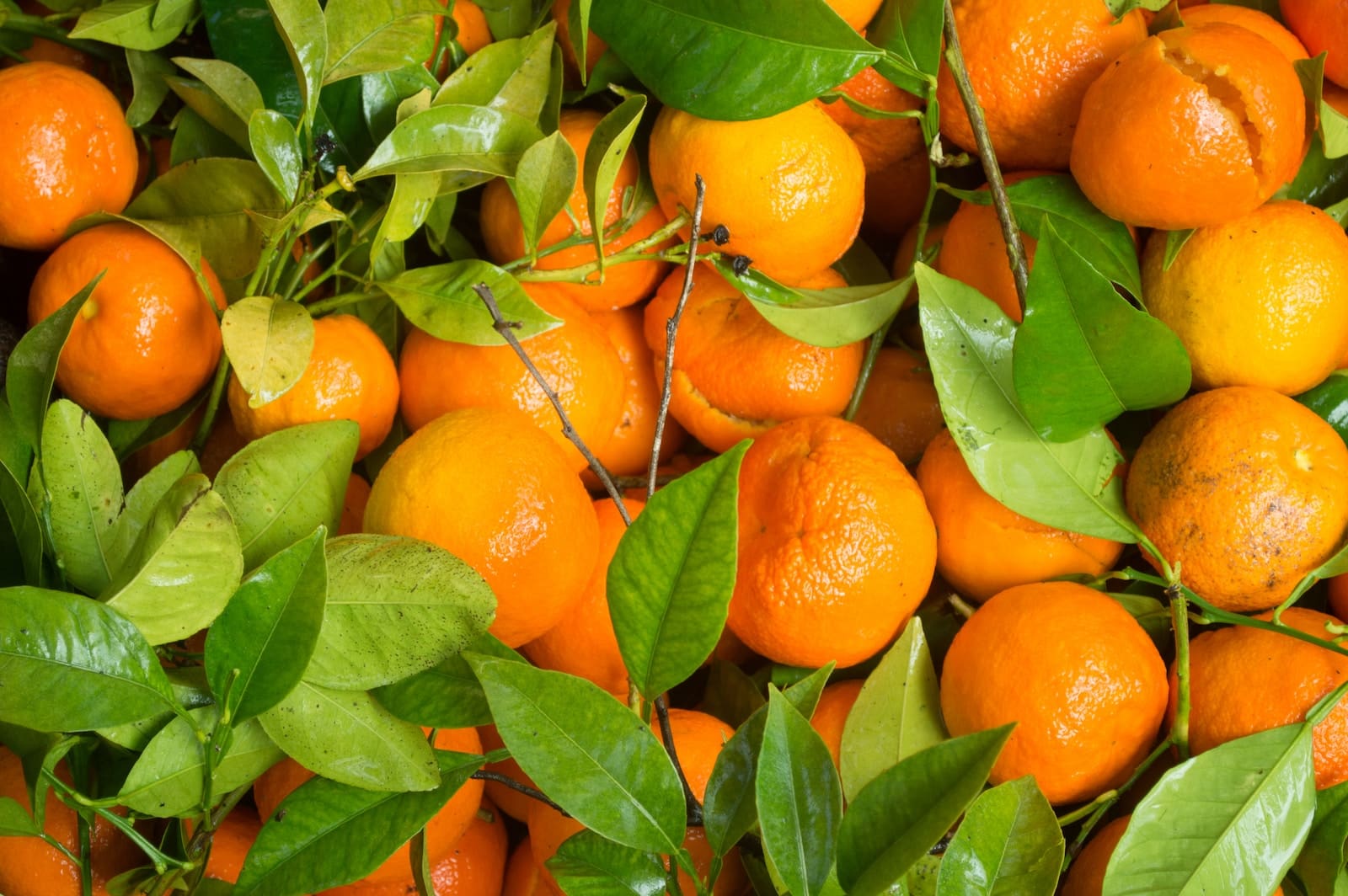There is a wide range of fruit species that resemble each other but are very different when it comes to comparing them. The same goes for the widely consumed citrus fruits tangerines and clementines which seem to be similar.
But they are two different fruits that just belong to one family.
Key Takeaways
- Tangerines are larger and slightly less sweet than clementines, with thicker, rougher skin that is more difficult to peel.
- Clementines are seedless, while tangerines may contain seeds.
- Clementines are a hybrid of mandarin and sweet oranges, whereas tangerines are a variety of mandarin oranges.
Tangerine vs Clementine
The difference between Tangerine and Clementine is that Tangerine is a citrus fruit that is very similar to orange and belongs to the same family. On the other hand, Clementine is a small fruit that is a hybrid of sweet oranges and mandarins. Both tangerines and Clementines are species of orange.

Tangerine is a citrus fruit that resembles orange in appearance. It has a deep orange color with a rind that is easier to peel off. It is considered to be a particular species of orange that is grown at a certain temperature.
Tangerines are sometimes called baby oranges due to their smaller size than an orange.
Clementine is referred to as a very small orange, which is also known as a tangor. It is a product of willow leaf mandarin orange and sweet orange. For this reason, it is known as hybrid citrus fruit.
The fruit Clementine is named after the first person to grow them in Algeria, Clément Rodie.
Comparison Table
| Parameters Of Comparison | Tangerine | Clementine |
|---|---|---|
| Definition | Tangerine is a type of citrus fruit that looks like an orange but is a member of the same family. | Clementine is also a citrus fruit that is small in size and very sweet and juicy in taste. |
| Origin | The origin of Tangerine is considered to be in Palatka and the year of origin is around the 1800s. | The origin of Clementine is considered to be in Misserghin and the year of origin is around the late 1900s. |
| Etymology | Tangerines got their name from a place known as Tangier, the city that exported them. | Clementine got its name from a person known as Clément Rodie, who cultivated them for the first time. |
| Other names | Other names that are used in the place of tangerines are mikan, satsuma mandarin, satsuma tangerine, etc. | There are no particular additional names of Clementine except for Halos and a small orange. |
| Segments | Tangerine can have 10 to 12 segments in each fruit depending on the size. | Clementine can have 7 to 14 segments in each fruit, They are smaller in size. |
What is Tangerine?
Tangerine is a widely loved fruit that is not perfectly round. Tangerines consist of multiple nutrients but they lack calories. There are some scientific names given to tangerines that are Citrus x tangerina and Citrus tangerina.
They look quite similar to an orange but have many different things.
Tangerine is like a cousin of oranges since they belong to the same family that is called the citrus family but both of them have different origins.
It is said that Tangerine was grown in a place known as Palatka for the first time around the 1800s. This place is located in Florida.
There is also an interesting reason for its name, it is believed that these fruits were called Tangerines because they were sent from a Moroccan city known as Tangier. The species they belong to is designated as tangerina.
In some countries, for example, the United States, Tangerine is sold with a label saying mandarins because according to a botanic study tangerine is considered to be related to a subgroup of mandarin.
Generally, Tangerines are most suitable for consumption from mid-October to January.
Unlike oranges, Tangerine is very delicate to touch when it is ripe and it can have many seeds to none, it all depends on what variety they are from.

What is Clementine?
Hybrid citrus fruit of orange and mandarin Clementine is also known as Halos in some countries. Clementine looks like a tiny Orange and is seedless.
Their outer skin seems to be very glossy and these fruits are sweeter than other citrus fruits. A Clementine can have 7 to 14 segments depending on the size.
These fruits have fewer amounts of acid and are very juicy. Clementine shares one similarity to the tangerines which is being quite easier to be peeled off.
The oil of Clementine contains linalool, pinene, myrcene, and limonene as well as many aromatics. The origin point of Clementine is found in the late 1900s around the place known as Misserghin Algeria.
Clementine does not require too much heat to be grown because it is very sensitive to it. Places such as North America, California, and the Mediterranean basin are hot places and here Clementine is grown early.
Although the sweetest and bigger Clementine also comes from these places.
There are mainly two types of Clementines are divided into, Monreal and seedless. The Monreal Clementine have seeds and are found in North America.
Clementine has a wide range of varieties that is Clementine del Golfo di Taranto, Nules, Clemenules, fina, Algerian, etc.

Main Differences Between Tangerine and Clementine
- Tangerine has seeds in the juicy segments and they are not edible. On the other hand, Clementine does not have seeds except for some varieties.
- Some of the major varieties of Tangerines are Kinnow, Fairchild tangerine, dekopon, etc. While varieties that Clementine has are seedless and Monreal.
- The places tangerines are mostly found in are northeast India, China, Japan, etc. On the other hand, Clementine is found in China and Algeria.
- When it comes to size, tangerines are larger in size and irregular in shape. On the other hand, tangerines are small and round.
- The maximum number of segments a tangerine can have is 12. On the other hand, The maximum number of segments a Clementine can have is 14.




